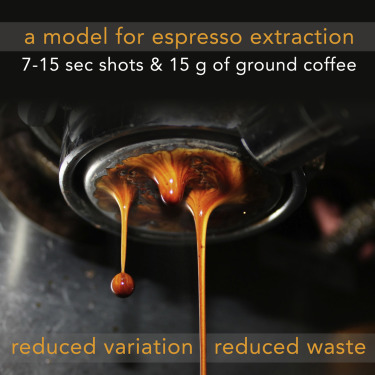Maybe you’re finding yourself making a lot more coffee now you’re stuck at home. Maybe you shelled out on an espresso machine. Maybe you’re just a coffee enthusiast. Brewers at Frisky Goat coffee have partnered with analytic companies from Switzerland and the UK, and researchers from Cambridge, Huddersfield, Limerick, Portsmouth, and the USA, to pin down some fundamental improvements to making expresso in a recent article in the journal Matter.
The article: Systematically Improving Espresso: Insights from Mathematical Modeling and Experiment, lays out their thesis for a perfect cup of Joe. The goal of the study was not to tell baristas what a good coffee tastes like, hopefully they knew that already. Rather, the team aimed to reduce waste by finding the conditions in which perfect coffees could be reliably made using less water or dry coffee. They targeted several important brewing parameters for their study, such as grinder setting (fineness of the coffee ground) and extraction yield , while considering the espresso machines water pressure and how this combines with coffee particle size to affect the flow rate through the grinds. They monitored extraction yield – the ratio of dry coffee going in, to concentration of coffee in the espresso shot – which typically ranges from 17% – 23%. Coffees over 23% tend to taste bitter, whereas those under 17% tend to taste sour. They recommend that baristas identify conditions where their coffees taste good to them – the “tasting-point” – and then use their recommendations to calculate a more material effective way of producing the same espresso. The article claims that espresso is the coffee style most vulnerable to fluctuations in brewing and beans that might affect quality. And argue that there is a clear need for guidance in this area from the scientific community.

Coffee grind setting was identified as being very important. Courser grinds create more variably sized (and shaped) particles of coffee, which in turn produce larger pore spaces for water to flow through. This increases flow rate but decreases the surface area of coffee the water is exposed to. The particulate size was identified as being bimodal – having two peaks. The smaller peak represented the fines produced from the point of fracture of the bean and a larger peak was the large coffee boulders which peaked around the largest size at which they could escape the burr grinder. Although more of the coffee ended up boulder-sized the majority of the flavour comes from the finer material. However, the article warns against grinding too fine and identifies that a minimum grind size for homogenous extraction exists, a grind below this results the machine becoming partially clogged and highly inefficient. Tamping pressure and machine pressure are also important parameters.
The final recommendations include locating the “tasty point” of the coffee and then identifying the best combo of grind setting and either added water, or grind volume needed to achieve an equivalent tasting, less wasteful coffee:
“Thus, a barista is able to achieve highly reproducible espresso with the same [extraction yield] as the 20g espresso by reducing the coffee mass to 15 g and counter-intuitively grinding much coarser. This modification may result in very fast shots (<15s), a reduction in espresso concentration, and a different flavour profile.”

The article declares no conflicts of interest, though this is highly suspect as we could all benefit from knowing the secrets of a better brew.
Want to know more: Cameron et al., Matter 2, 1–18, 2020 Elsevier Inc.
By Justin Byrne | {react} Committee Member